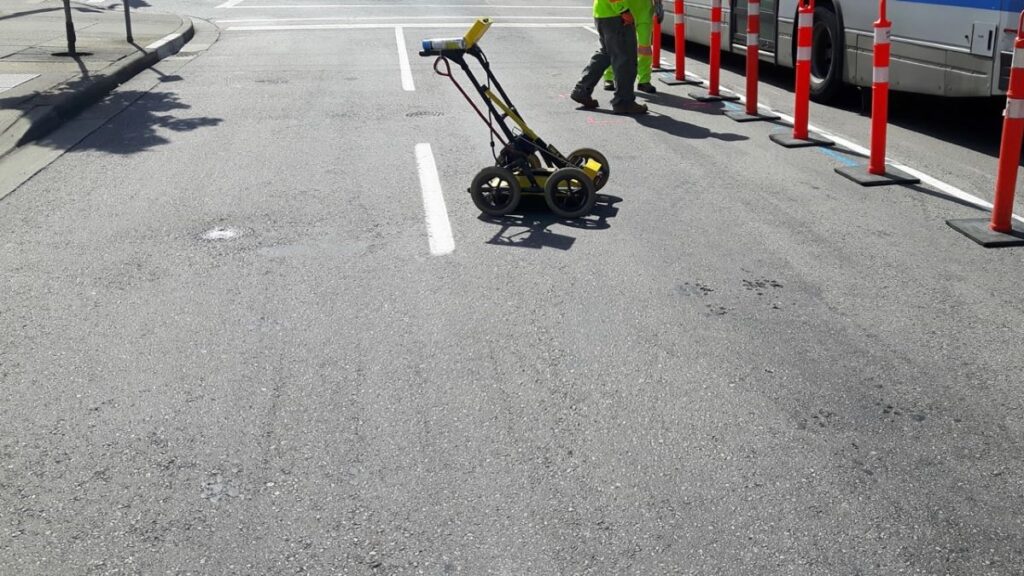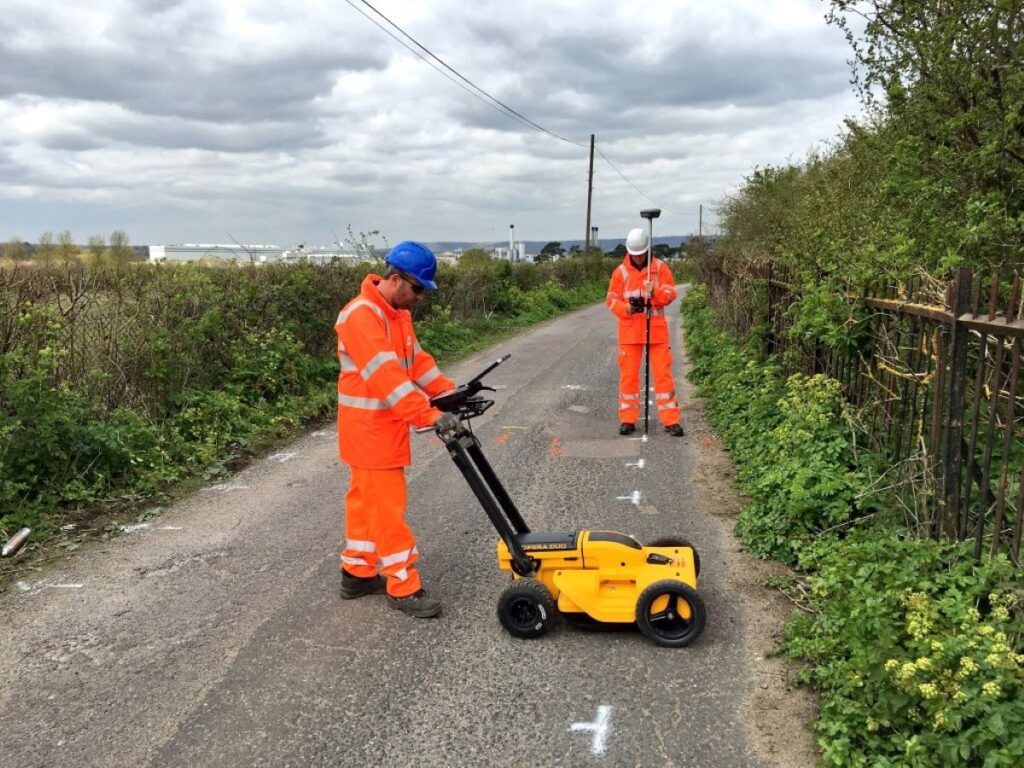In today’s rapidly evolving urban landscapes, the need for efficient and safe construction practices cannot be overstated. An integral part of ensuring this safety is the proper locating of underground utilities. These services play a crucial role in preventing accidents, facilitating smooth operations, and adhering to legal requirements. This article explores the significance of underground utility locating and its multifaceted impact on safety.
Understanding Underground Utilities
Underground utilities consist of essential systems tucked away beneath the surface of roads, buildings, and landscapes. These utilities can range from water and gas pipelines to electrical and telecommunications lines. The intricate network of these systems is often overlooked, yet they play a critical role in the functionality of urban and rural environments alike.
Identifying and understanding the layout of these utilities is paramount to any construction or excavation project. A comprehensive grasp of what lies beneath helps in mitigating risks and safeguarding public safety. Moreover, the integration of advanced technologies such as ground-penetrating radar (GPR) and utility mapping software has revolutionized how we locate and manage these underground assets, enabling more efficient planning and execution of construction activities.
The Role of Underground Utilities
Underground utilities serve as the lifelines of modern infrastructure. They provide essential services that support daily activities, from supplying clean water and electricity to facilitating communication and transporting waste. The reliability of these utilities is crucial, as any disruption can lead to significant inconveniences and hazards, impacting not just individual households but entire communities.
The complexity of these systems is often coupled with the necessity for repair and maintenance, making it imperative for contractors and workers to have accurate information regarding their locations during any digging or construction activities. Regular inspections and updates to utility maps are essential to ensure that the information remains current, as new developments and modifications to existing systems can occur frequently. This proactive approach not only enhances safety but also minimizes the potential for costly delays and repairs.
Types of Underground Utilities
There are several types of underground utilities that one may encounter, each serving distinct functions in society:
- Water Supply Lines
- Sewer Systems
- Gas Pipelines
- Electric Cables
- Telecommunication Lines
- Storm Drains
Each utility type has its own depth and safety considerations, requiring specialized equipment and training for proper locating. Understanding these distinctions is vital for any contractor or worker involved in excavation projects. For instance, while water lines are typically buried at a depth of 3 to 6 feet, gas pipelines may be located deeper due to their flammable nature, necessitating different approaches to excavation and safety protocols.
Furthermore, the interaction between various utilities can pose additional challenges. For example, when excavating near electric cables, workers must be particularly cautious to avoid accidental contact, which can lead to severe injuries or fatalities. This complexity underscores the importance of thorough utility assessments and the need for collaboration between utility companies and construction teams to ensure that all safety measures are adhered to during excavation activities.
The Importance of Locating Underground Utilities
The process of accurately locating underground utilities is not just a matter of convenience; it is essential for preventing dangerous situations that may arise during excavation or construction activities.
Locating utilities serves as a critical step in project planning and execution. When workers have a clear map of what lies beneath, they can work more efficiently and safely. This clarity not only enhances productivity but also fosters a culture of safety, where workers are more aware of their surroundings and the potential hazards associated with underground infrastructure.
Preventing Accidents and Injuries
Accidental strikes on underground utilities can lead to severe injuries, not only to workers but also to bystanders. Gas line ruptures can cause explosions, while disrupting electrical lines may lead to electrocutions or power outages.
By employing trained professionals to locate these utilities, companies can significantly reduce the likelihood of accidents, ensuring a safer working environment. This preventive measure saves lives and protects infrastructure from damage. Moreover, the financial implications of such accidents can be staggering, with costs associated with medical bills, legal fees, and repairs potentially running into millions. Therefore, investing in utility locating services is not only a matter of safety but also a sound financial decision.
Avoiding Service Disruptions
Service disruptions can have far-reaching consequences for both businesses and local communities. Hitting a utility line can instantly shut down services like water supply, electricity, or internet access, affecting countless users.
Efficient locating of utilities allows construction projects to proceed without unexpected interruptions, ensuring that communities remain connected and functional. It emphasizes the importance of thorough preparation and underscores the need for utility locating services in every excavation project. Additionally, the impact of service disruptions can ripple through the economy, affecting local businesses that rely on uninterrupted services to serve their customers. By prioritizing utility locating, companies not only protect their projects but also contribute to the overall stability and resilience of the communities they operate in.

The Process of Underground Utility Locating
The process of underground utility locating involves several steps and utilizes various sophisticated tools to ensure accuracy and safety. Understanding how this process works can help stakeholders appreciate its value.
Equipment Used in Utility Locating
The equipment used in utility locating varies depending on the type of utility and the techniques employed. Some of the most common tools include:
- Electromagnetic Locators: Used to detect utility lines by reading electromagnetic signals emitted by electrical conduits.
- Ground Penetrating Radar (GPR): A non-invasive technology that utilizes radar pulses to image the subsurface and locate the presence of utilities.
- Acoustic Tools: Employed to listen for sounds along utility lines, helping locate pipes or cables.
The selection of the right equipment is crucial for accurate and safe utility locating. Skilled technicians are trained to use these tools effectively, ensuring that the locating process is precise and reliable. Additionally, advancements in technology have led to the development of more sophisticated devices, such as multi-frequency locators that can detect various types of utilities simultaneously, enhancing efficiency and reducing the time spent on site.
Steps in the Locating Process
The utility locating process typically follows several key steps:
- Initial Consultation: Assessing the project site and requirements.
- Data Gathering: Compiling information about existing utility maps and layouts from local authorities.
- Field Survey: Using tools to trace and mark the locations of identified utilities on-site.
- Reporting: Compiling findings into comprehensive reports for the project team.
By adhering to these steps, locating services can provide accurate and helpful data that inform the construction and excavation processes, ultimately leading to safer outcomes. Moreover, the importance of communication cannot be overstated; ongoing dialogue between utility locators, contractors, and project managers is essential to address any potential discrepancies in utility mapping and to ensure that all parties are aligned on safety protocols. This collaborative approach not only mitigates risks but also fosters a culture of safety and diligence throughout the project lifecycle.
The Role of Utility Locating in Construction and Excavation
Utility locating is a fundamental practice in the construction and excavation industries. It informs many critical decisions before the start of any project, ensuring that safety and efficiency are prioritized.
Pre-Construction Planning
Before any digging begins, comprehensive planning is required. Utility locating services facilitate this planning by supplying detailed maps and locations of existing utilities.
This information helps project managers and contractors devise strategies to avoid conflicts and develop timelines that account for potential disruptions. Proper pre-construction planning significantly enhances project success rates. Additionally, the integration of advanced technologies such as Ground Penetrating Radar (GPR) and electromagnetic locating tools has revolutionized the accuracy of utility mapping. These technologies not only provide a clearer picture of what lies beneath the surface but also help in identifying the condition of existing utilities, which is crucial for making informed decisions about potential upgrades or replacements during the project. Check out more about how utility locating improves construction efficiency.
Excavation Safety Measures
Safety measures are paramount when conducting excavation work. Locating underground utilities accurately is a necessary step in implementing these safety protocols.
Workers equipped with utility location data can implement strategies to avoid any contact with underground lines, such as determining safe digging depths, reinforcing equipment safety, and employing proper excavation techniques. Furthermore, ongoing training and awareness programs for workers about the risks associated with utility strikes are essential. These programs emphasize the importance of adhering to safety regulations and utilizing the latest utility locating technologies. By fostering a culture of safety and preparedness, construction companies can significantly reduce the likelihood of accidents, ensuring not only the well-being of their workers but also the integrity of the surrounding infrastructure.

Legal and Regulatory Aspects of Underground Utility Locating
The legal and regulatory components surrounding underground utility locating are critical. Compliance with local, state, and federal regulations ensures not only safety but also avoids legal repercussions for contractors.
Compliance with Safety Regulations
Regulatory bodies have established safety regulations that dictate the procedures for locating utilities. These regulations are designed to protect workers, the public, and the environment, establishing standards for how utility locating should be performed.
Adherence to these regulations is not just optional; it is a legal requirement. Failure to comply can lead to significant fines, delays in project completion, and increased liability.
Legal Consequences of Negligence
If negligence occurs in the locating of underground utilities, the consequences can be severe. Accidental strikes on utilities can lead to costly damages, resulting in lost time and financial strain on businesses.
Moreover, individuals or companies found liable for such negligence may face lawsuits, higher insurance premiums, and damage to their reputations. Thus, emphasizing the role of utility locating services in ensuring compliance with legal standards is crucial for the longevity and integrity of construction and excavation businesses.
In conclusion, the importance of underground utility locating services cannot be overstated. Their role in preventing accidents, avoiding service disruptions, enabling effective project planning, and ensuring compliance with regulations underlines their essential nature in construction and excavation industries. Investing in professional utility locating services is investing in safety, efficiency, and peace of mind.

Leave a Reply